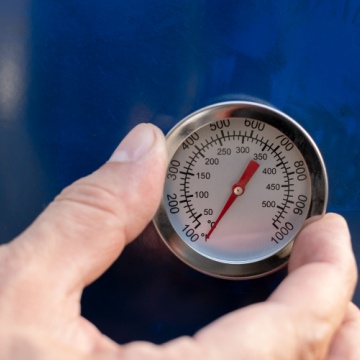Businesses dealing with perishable goods such as pharmaceuticals, food and fresh produce, and biologics must take adequate measures to ensure the integrity and quality of these goods and this is where temperature monitoring comes in. The use of temperature monitors is becoming increasingly prevalent nowadays to help organisations supervise the conditions under which they store and transport their perishable assets. Advanced temperature monitoring systems are extremely reliable, and can be used throughout the entire supply chain.
Temperature monitors enhance the handling of perishable goods in many different ways.
Product Quality and Shelf Life
Implementation of quality control initiatives throughout the cold chain is a major challenge for the perishable goods industry. By controlling and monitoring temperature levels during transportation and storage, prevent spoilage, extend shelf-life, and maintain the quality of these goods. Quality control issues not only result in product recalls but also cause damage to customer trust and brand reputation.
Depending on the specific type of product, the optimal temperature for the storage of perishable goods can vary. Therefore, their temperature requirements for maintaining quality, safety, and shelf life across the cold chain are different.
- All vaccines are extremely temperature sensitive and the optimal storage temperature for most of them is between 2°C and 8°C.
- For biologics such as blood products, the storage temperature should be between 1°C and 6°C.
- The ideal temperature for the storage of fresh vegetables and fruits is between 0°C to 5°C.
- As they are extremely susceptible to bacterial growth and contamination, meat, seafood, and dairy products need to be stored and transported between 0°C to 5°C for safety and extended shelf-life.
- In the case of all types of frozen food items, storage and transportation temperatures should be below -18°C.
By prioritising temperature monitoring, organisations deliver products of desired reliability, quality, and longevity to end users.
Safety and Compliance
Adhering to industry standards and regulatory requirements during the handling and transportation of perishable goods is a must for ensuring consumer well-being and minimising health risks. For instance, the Hazard Analysis and Critical Control Points (HACCP) system is a mandatory requirement in the food industry. It outlines all essential steps for the identification and control of potential hazards during the production and distribution of food products. Similarly, the World Health Organization (WHO) has set stringent temperature requirements for the storage and transportation of pharmaceuticals and vaccines. By investing in a robust temperature monitoring system, businesses can achieve the highest level of safety and compliance by identifying and addressing potential issues.
Brand Reputation
In today’s competitive market, all businesses understand the immense value of a positive brand reputation. One of the sure-fire ways to achieve this is by delivering temperature-sensitive goods to consumers in optimal condition. When customers receive quality products as per their expectations, there is an increase in their satisfaction level. This positive experience is critical to fostering customer engagement and brand loyalty.
If you are in the business of perishable goods, don’t forget to take a look at the advanced range of temperature monitoring systems from ShockWatch.


